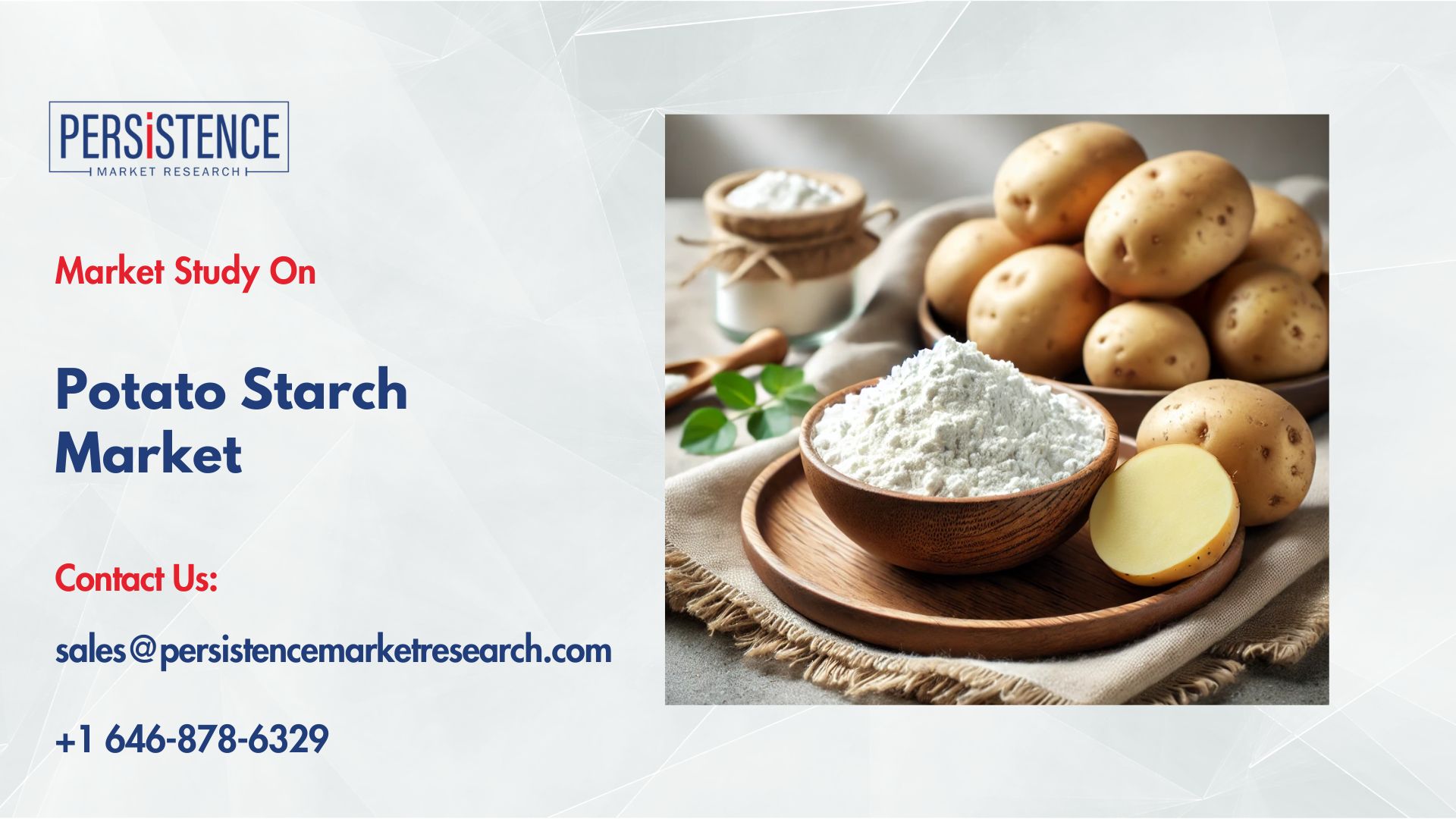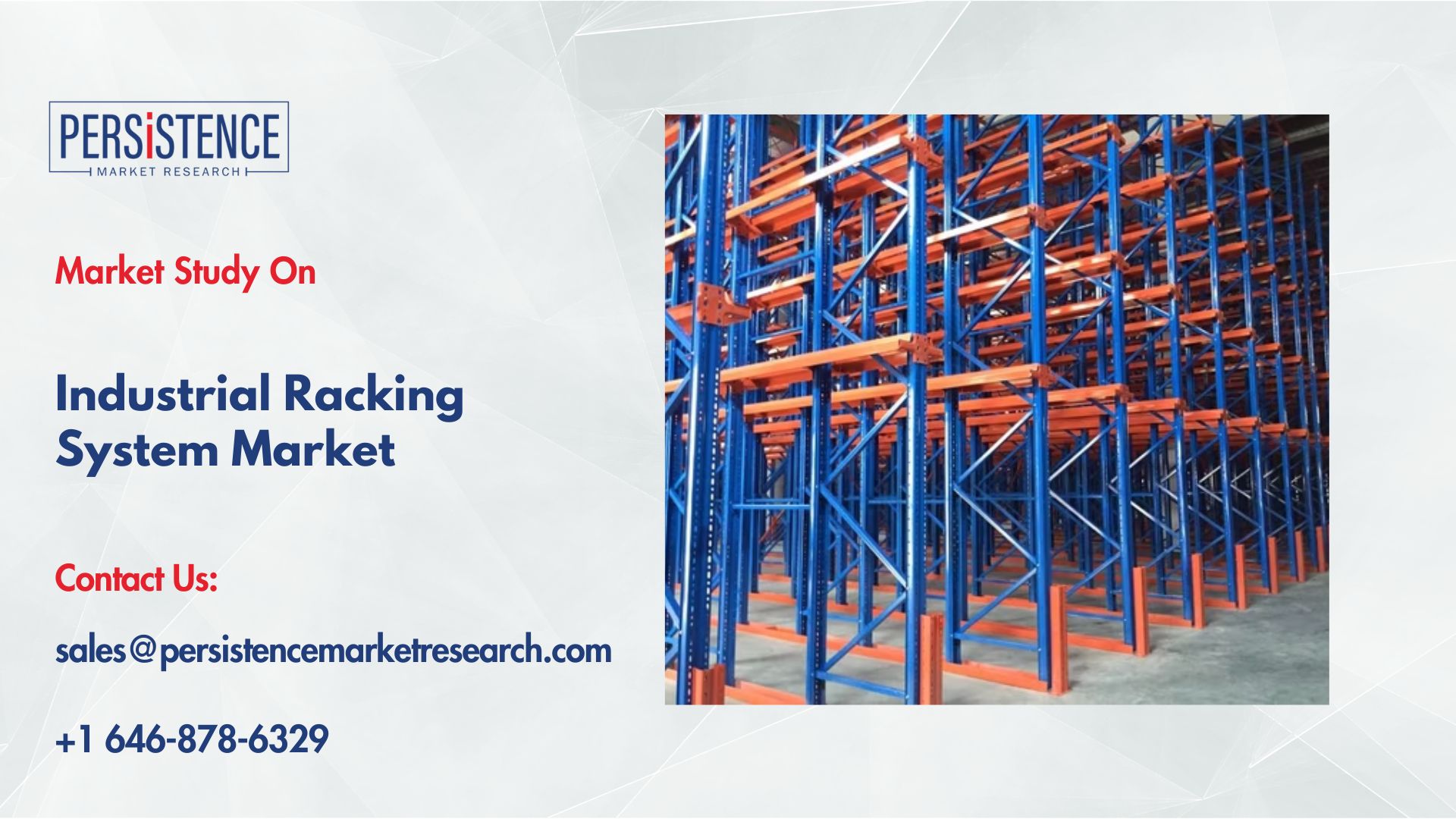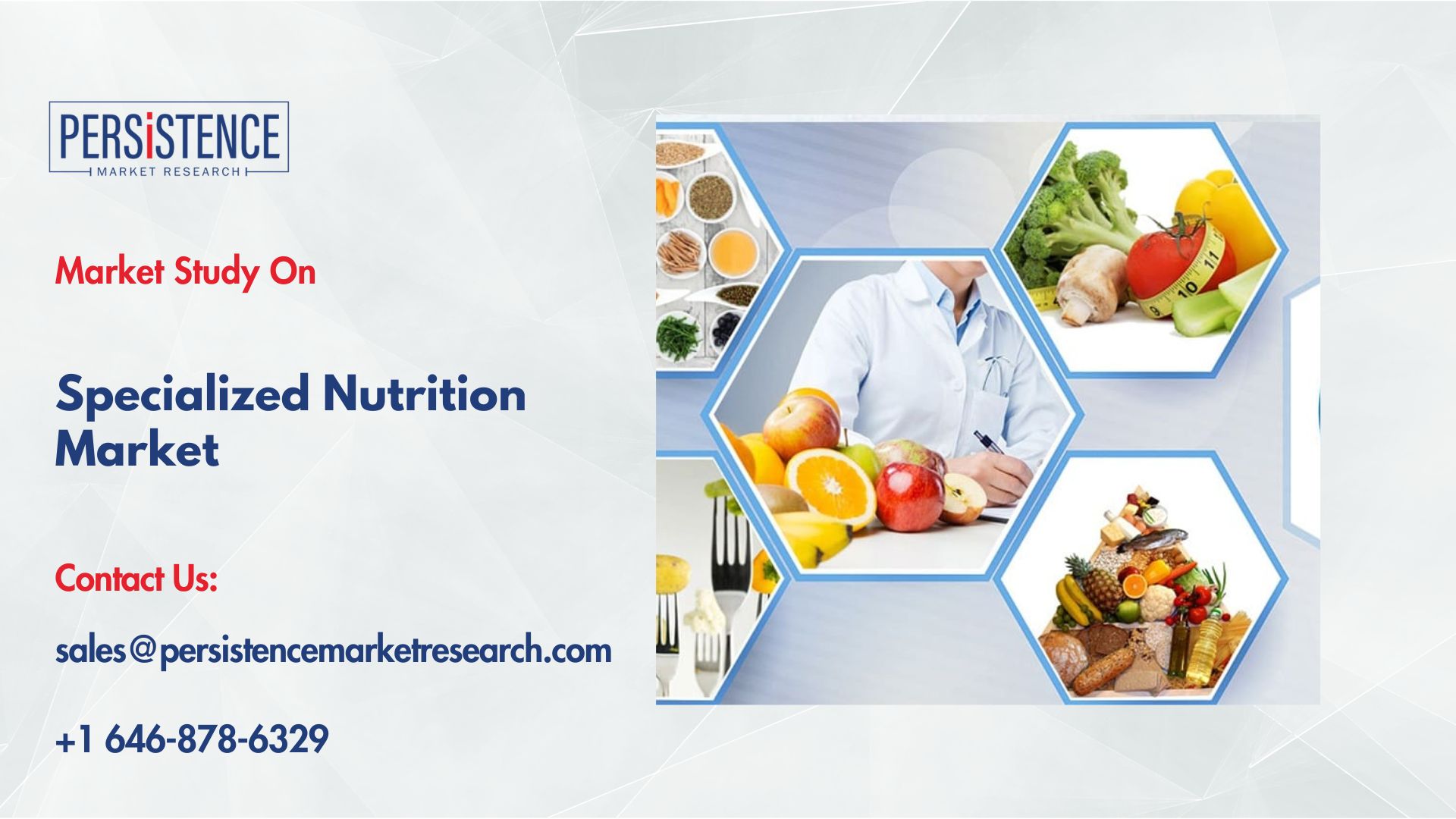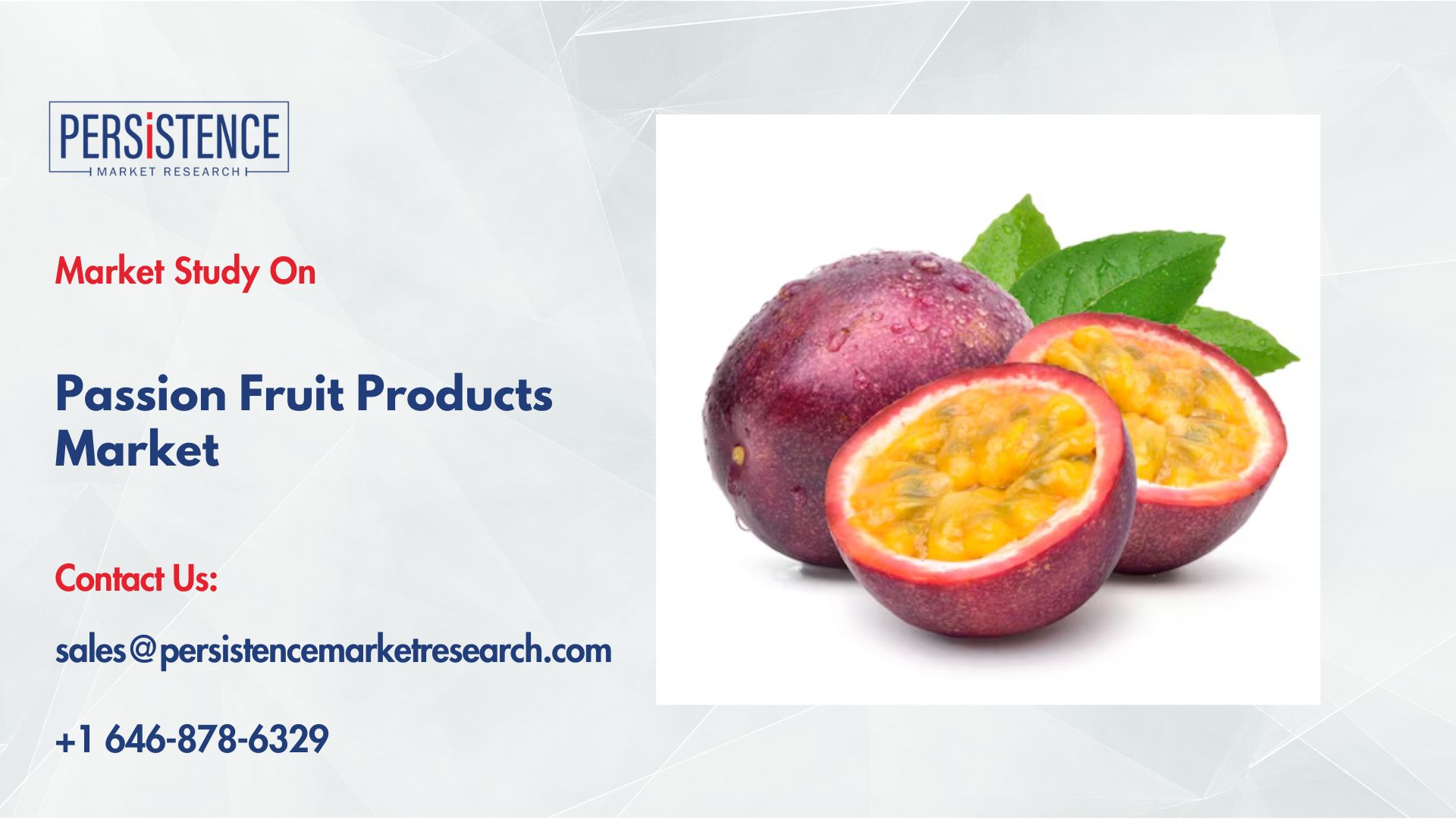Potato Starch Market in Asia Pacific to Register Fastest Regional Growth

Strong 8k brings an ultra-HD IPTV experience to your living room and your pocket.
Potato Starch Market Share and Trends Analysis: Forecast to 2032
The global potato starch market is poised for significant growth, with its valuation projected to increase from US$ 4,739.5 million in 2025 to US$ 6,391.2 million by 2032. This expansion represents a Compound Annual Growth Rate (CAGR) of 4.4% over the forecast period. The steady rise in demand is closely linked to the increasing consumption of processed and convenience foods, along with heightened awareness surrounding clean-label, gluten-free, and functional food ingredients. Potato starch is increasingly gaining recognition for its superior thickening, stabilizing, and moisture-retaining properties, which makes it highly valuable across the food, pharmaceutical, paper, textile, and packaging industries.
This article explores the intricate dynamics, drivers, constraints, and opportunities that shape the potato starch market while also analyzing key regional trends, product segmentations, and competitive developments.
Market Dynamics Driving Growth
Increasing Demand for Processed and Convenience Foods
A primary growth driver for the potato starch market is the growing global appetite for processed and convenience foods. With evolving urban lifestyles and a rise in working populations, consumers increasingly opt for time-saving food solutions such as ready-to-eat meals, frozen foods, sauces, soups, and snack items. Potato starch is widely utilized in these products to improve texture, enhance mouthfeel, extend shelf life, and act as a binding and thickening agent. Its neutral flavor, gluten-free nature, and ability to stabilize emulsions make it a favored ingredient among food technologists and formulators.
According to the USDA, processed food exports from the United States alone reached US$38.8 billion in 2024. This statistic underscores the widespread global demand for convenient food solutions, bolstering the use of natural and functional additives like potato starch. As consumer preferences shift towards food products that are not only tasty and easy to prepare but also clean-label and nutritious, the significance of potato starch in food processing continues to grow.
Shift Toward Clean-Label and Non-GMO Ingredients
Consumer preference for clean-label, natural, and non-GMO food products is rapidly redefining ingredient selection in the food and beverage industry. Potato starch, especially in its native and organic forms, is emerging as an ideal solution due to its natural origin and absence of synthetic additives. As transparency becomes a key purchasing factor, food manufacturers are incorporating more natural thickeners and binders into their formulations.
This trend is not only limited to food but also extends to pharmaceuticals and personal care products. Consumers increasingly demand transparency in what they ingest or apply to their bodies. As such, organically sourced potato starch is gaining traction for its chemical-free, pesticide-free profile, positioning itself as an ethical and sustainable alternative to synthetic additives and genetically modified starches.
Restraints Hindering Market Expansion
Competition from Alternative Starches
While the market outlook for potato starch remains optimistic, it faces strong competitive pressure from substitute starches such as corn starch, rice flour, wheat flour, arrowroot powder, and tapioca starch. These alternatives are widely used in food and industrial applications and are often more cost-effective or better suited to specific processing conditions.
Corn starch, for example, offers higher heat stability and is frequently used in high-temperature industrial applications. Arrowroot and tapioca starch, on the other hand, are favored in gluten-free baking due to their better freeze-thaw stability and lighter texture. In industrial applications, modified corn starch is often selected over potato starch because of its superior resistance to thermal and shear stresses.
This intense competition from alternative starches limits the growth potential of potato starch, particularly in emerging application segments where technical performance or price competitiveness is paramount.
Opportunities in Industrial Applications
Development of Modified Potato Starch for Paper and Packaging
A promising opportunity lies in the advancement of modified potato starch tailored specifically for the paper and packaging industries. Potato starch possesses excellent binding, film-forming, and viscosity-modifying properties, making it suitable for paper sizing, coating, and as an adhesive.
With increasing global awareness of environmental issues and a strong push toward biodegradable and recyclable materials, the paper and packaging industry is undergoing a transformation. Manufacturers are now looking for natural, sustainable, and cost-effective solutions. Modified potato starch aligns perfectly with these needs by offering biodegradable, plant-based alternatives to synthetic chemicals.
By enhancing the thermal resistance, water retention capacity, and adhesive strength of potato starch, companies can develop premium-grade variants that outperform conventional adhesives and coatings. This innovation not only meets performance criteria but also contributes to sustainability goals, positioning modified potato starch as a cornerstone of green packaging technologies.
Product Type Insights: Native vs. Modified Starch
In terms of product segmentation, the market is divided between native and modified potato starch. Modified starch holds a dominant position, owing to its adaptability and enhanced functionality across multiple industries.
In the food sector, modified starch is widely used for its superior thickening, stabilizing, and emulsifying capabilities. It performs exceptionally well in frozen and microwaveable foods due to its resilience to freezing and reheating cycles. In the pharmaceutical sector, modified potato starch is used as a binder and disintegrant in tablet production. Its uniform consistency ensures optimal drug delivery and shelf stability.
The textile and paper industries also benefit from the use of modified starch. In textiles, it enhances warp sizing, leading to improved yarn smoothness and weaving efficiency. In the paper industry, modified potato starch increases tensile strength and printability, ensuring better product quality.
Native potato starch, while less processed, holds significant market value due to its appeal in clean-label and organic products. It is widely used in minimally processed and organic food items as a natural thickener and moisture retainer. As demand for transparency in food ingredients increases, the clean-label appeal of native potato starch is likely to maintain its relevance, especially among organic food manufacturers and consumers.
Nature-Based Segmentation: Organic vs. Conventional
Organic potato starch is witnessing increased popularity in both food and non-food sectors. Health-conscious consumers are increasingly turning toward chemical-free, sustainably produced, and non-GMO ingredients. Organic starches meet this growing demand by providing assurance of quality and environmental responsibility.
Organic potato starch is used in a variety of applications, including organic baked goods, baby foods, snacks, and even dietary supplements. Its ability to deliver functional benefits without compromising clean-label standards gives it a competitive edge. As consumers grow wary of synthetic ingredients, demand for organic potato starch is expected to outpace conventional variants in premium segments.
Conventional potato starch, while still widely used, is facing challenges such as rising concerns over pesticide residues and potential GMO content. These factors could limit its growth among eco-conscious and health-oriented consumers unless manufacturers adopt more sustainable and transparent sourcing practices.
Regional Analysis
Europe: Dominating Global Production and Innovation
Europe leads the global potato starch market in terms of production, innovation, and export. Countries such as Germany, France, and the Netherlands are central hubs for potato starch manufacturing, backed by a strong agricultural base and advanced processing infrastructure.
Companies such as Royal Avebe, Roquette, and Emsland Group are continuously investing in research and development to enhance product quality and sustainability. The region is also embracing clean-label and organic trends, thereby driving demand for native and organic potato starch.
Furthermore, European industries are exploring the use of starch-based adhesives and coatings in packaging and construction, opening up new revenue streams. With governmental support for sustainable materials and circular economy initiatives, Europe is likely to maintain its leadership position in the global potato starch market.
North America: Growth Driven by Food and Paper Industries
North America is experiencing robust growth in potato starch demand, largely driven by the food processing and paper industries. The United States, a key player in global food exports, extensively utilizes potato starch in processed and convenience foods. The rise in demand for gluten-free, plant-based, and clean-label products is further fueling growth in the region.
Canada is also emerging as a strong consumer of potato starch, particularly due to the increased adoption of natural ingredients in food manufacturing. The country is witnessing growing imports to support rising demand from both the food and non-food sectors.
North America is expected to continue being a significant growth market, driven by evolving consumer preferences, technological innovation, and expanding industrial applications.
Asia Pacific: Fastest-Growing Regional Market
The Asia Pacific region is set to be the fastest-growing market for potato starch, driven by rapid industrialization, urbanization, and changing dietary preferences. China, the region's leading exporter, has a robust industrial base that supports the use of modified starches in textiles, paper, adhesives, and food.
India, with its booming packaging and paper industry and increasing foreign investment, is creating new avenues for starch manufacturers. The country is also witnessing a shift toward packaged foods, further boosting demand for functional food additives like potato starch.
As Asian countries continue to embrace western dietary trends and industrial expansion, the potato starch market in the region is expected to witness sustained double-digit growth in the coming years.
Competitive Landscape
The global potato starch market is highly competitive, with numerous players focusing on innovation, sustainability, and cost optimization. Leading players such as Ingredion, Cargill, Roquette, AGRANA, Tate & Lyle, and KMC are making strategic investments to expand capacity and enhance technological capabilities.
Recent industry developments reflect a strong focus on sustainability and innovation. In March 2025, KMC announced a €40 million investment in expanding its granule factory in Denmark to future-proof operations. Similarly, AGRANA invested €23 million in May 2023 to boost its production of technical starches for the construction and adhesive sectors.
Key companies are also investing in research and development to create modified starch variants with specific industrial properties, such as improved heat resistance and enhanced binding capacity. Collaborations with food scientists and packaging technologists are leading to the creation of specialized solutions for niche applications.
Furthermore, the industry is witnessing increased merger and acquisition activity, aimed at strengthening global supply chains and expanding product portfolios. As sustainability and clean-label trends intensify, the race to develop advanced, organic, and multifunctional potato starches is expected to drive further innovation and competition.
Conclusion
The global potato starch market presents a compelling growth narrative, underpinned by strong demand across multiple sectors including food, pharmaceuticals, paper, textiles, and packaging. As consumer trends increasingly favor clean-label, plant-based, and sustainable ingredients, potato starch—both native and modified—is emerging as a versatile and valuable component in modern manufacturing.
Despite facing competition from alternative starches, opportunities abound in industrial applications, especially in eco-friendly packaging and bio-based adhesives. Regional markets such as Europe and Asia Pacific continue to play pivotal roles in production, innovation, and consumption.
With sustained investments in R&D, processing technology, and sustainability initiatives, the potato starch industry is well-positioned to capitalize on emerging trends and maintain a steady growth trajectory through 2032.
Note: IndiBlogHub features both user-submitted and editorial content. We do not verify third-party contributions. Read our Disclaimer and Privacy Policyfor details.







